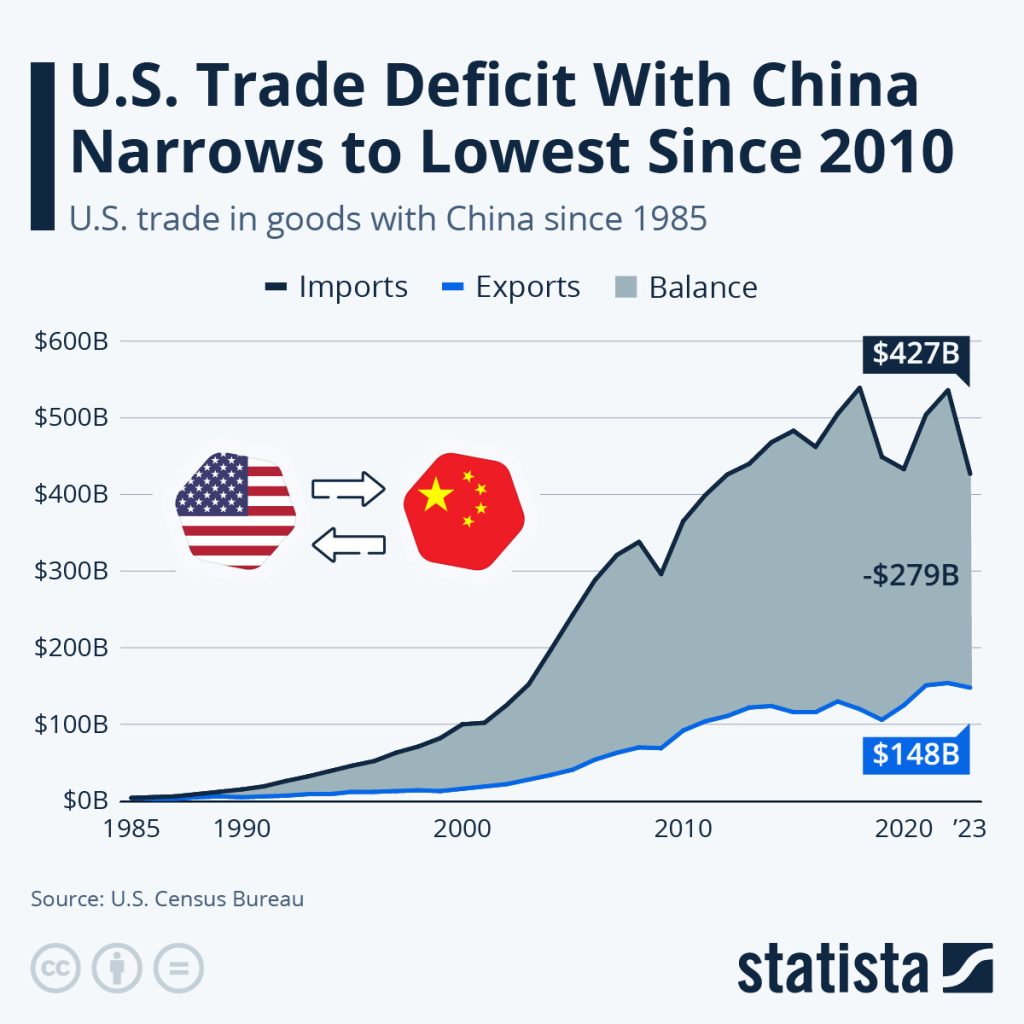Decoding The US-China Trade Agreement: Who Compromised?

Table of Contents
US Compromises in the US-China Trade Agreement
The US, under the Trump administration, initiated the trade war with significant tariff hikes. However, the subsequent US-China Trade Agreement saw the US make several compromises to reach a deal.
Tariff Rollbacks and the Phase-One Deal
A key element of the Phase One deal was the US's decision to roll back some tariffs imposed on Chinese goods. This was a significant concession, aimed at de-escalating tensions and fostering cooperation.
- Specific Tariff Reductions: Tariffs on certain consumer goods, ranging from clothing to electronics, were reduced or removed entirely.
- Economic Effects: While the rollback provided some relief to US consumers in the short term via lower prices on some goods, it also raised concerns about the long-term impact on US industries competing with Chinese imports. Some argued it hurt American manufacturers.
Enforcement Mechanisms and Intellectual Property
The US-China Trade Agreement included provisions designed to protect US intellectual property rights. However, the effectiveness of these mechanisms remains a subject of debate.
- Clauses on Intellectual Property Protection: The agreement contained clauses addressing forced technology transfer, patent infringement, and counterfeit goods.
- Enforcement Challenges: Effective enforcement remains a challenge. Monitoring compliance and addressing violations require robust mechanisms that may not always be fully implemented. The lack of independent oversight remains a concern.
Agricultural Purchases and Market Access
China committed to significantly increase its purchases of US agricultural products as part of the US-China Trade Agreement. However, the extent to which this commitment was met is debatable.
- Purchasing Targets: China pledged to purchase a substantial amount of US agricultural goods over a specified period.
- Impact on US Farmers: While some US farmers benefited from increased exports, the overall impact varied across different agricultural sectors. Some sectors experienced significant increases, others less so, and some felt the effects of the trade war more than the agreement's impact.
China's Compromises in the US-China Trade Agreement
While the US made concessions, China also made significant compromises to reach the agreement, some of which were substantial shifts in long-standing policy.
Intellectual Property Rights and Technology Transfer
China agreed to strengthen its intellectual property protection regime and curb forced technology transfer practices. These were significant concessions, reflecting a change in its approach to foreign investment.
- Specific Clauses: The agreement included detailed clauses on intellectual property protection, including patents, trademarks, and copyrights.
- Impact on Chinese Companies: These concessions put pressure on Chinese companies to improve their intellectual property practices and adapt to a more globally competitive environment. This spurred innovation in some areas.
Financial Sector Opening and State-Owned Enterprises
China committed to further opening its financial sector and reforming its state-owned enterprises (SOEs). These are significant long-term commitments with wide-ranging implications for its economy.
- Opening the Financial Sector: China agreed to ease restrictions on foreign investment in its financial services sector.
- SOE Reforms: While specifics were limited, the agreement signaled a commitment to increase transparency and competition within the SOE sector, a move away from the previous heavy state control.
Agricultural Purchases and Market Access (from China's Perspective)
From China's perspective, agreeing to increase purchases of US agricultural products represented a significant economic concession. This impacted domestic producers and consumers.
- Economic Impact: Increased imports of US agricultural products had an impact on Chinese farmers and related industries, increasing competition.
- Political Implications: The agreement demonstrated a willingness to make economic concessions to de-escalate trade tensions with the US. This could be seen as a strategic move to avoid further escalation.
Conclusion
The US-China Trade Agreement represents a complex interplay of compromises by both sides. The US conceded on tariffs and perhaps underestimated the challenges of enforcement related to intellectual property. China, in turn, made significant concessions regarding intellectual property rights, market access, and the opening of its financial sector. The long-term impacts of the US-China Trade Agreement remain to be fully seen. While the agreement offered some short-term gains and de-escalated tensions, lasting effects on trade, technology, and global economic relations are still unfolding. Understanding the intricacies of the US-China Trade Agreement is crucial for navigating the complexities of global trade. Continue your research on this critical topic by exploring related resources and staying updated on further developments in the US-China Trade Agreement.

Featured Posts
-
 Everest Ascent In A Week Anesthetic Gas Risks And Criticisms
May 16, 2025
Everest Ascent In A Week Anesthetic Gas Risks And Criticisms
May 16, 2025 -
 Microsoft Among Top Software Stocks Weathering Tariff Storms
May 16, 2025
Microsoft Among Top Software Stocks Weathering Tariff Storms
May 16, 2025 -
 Auto Dealers Reiterate Concerns Over Electric Vehicle Regulations
May 16, 2025
Auto Dealers Reiterate Concerns Over Electric Vehicle Regulations
May 16, 2025 -
 San Diego Padres Seek Series Victory Against Colorado Rockies
May 16, 2025
San Diego Padres Seek Series Victory Against Colorado Rockies
May 16, 2025 -
 Watch 3 Free Star Wars Andor Episodes On You Tube Now
May 16, 2025
Watch 3 Free Star Wars Andor Episodes On You Tube Now
May 16, 2025
